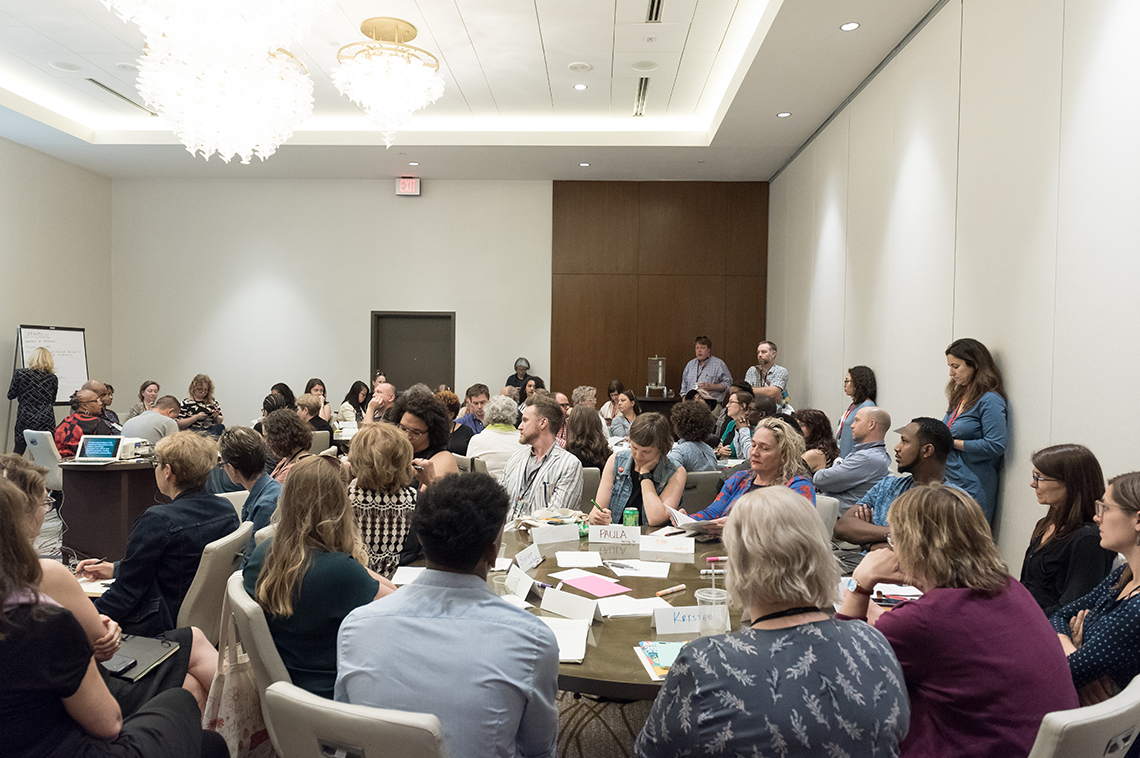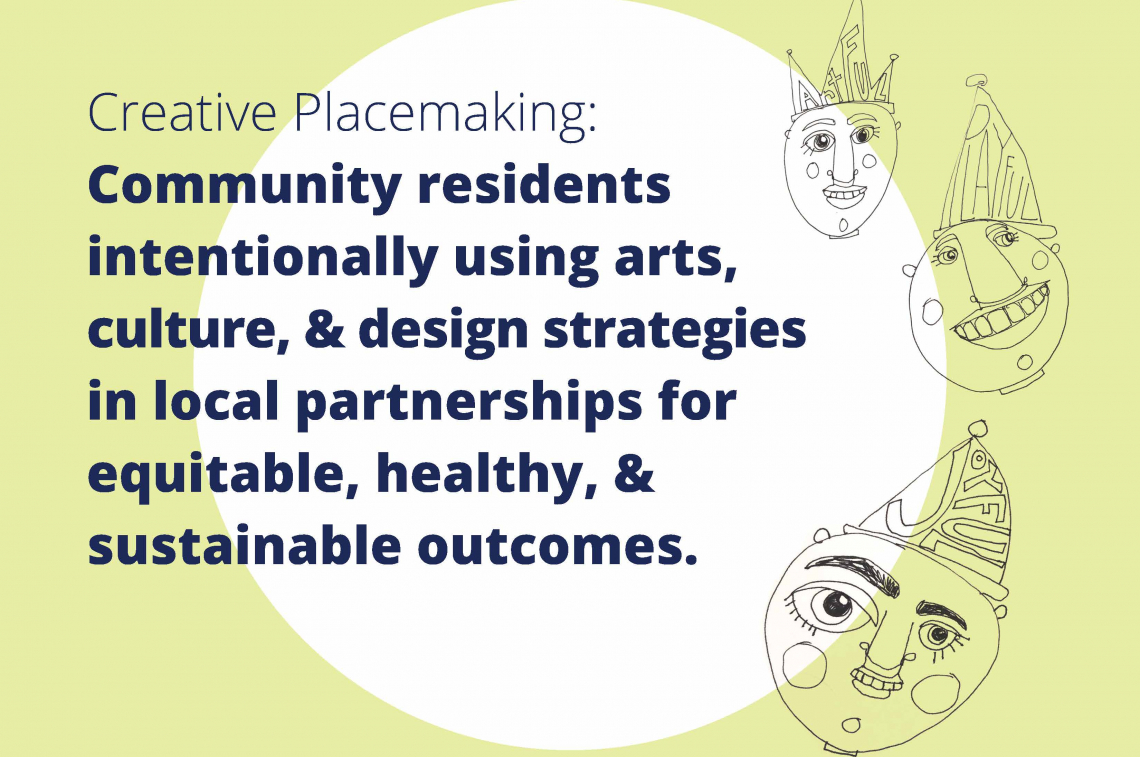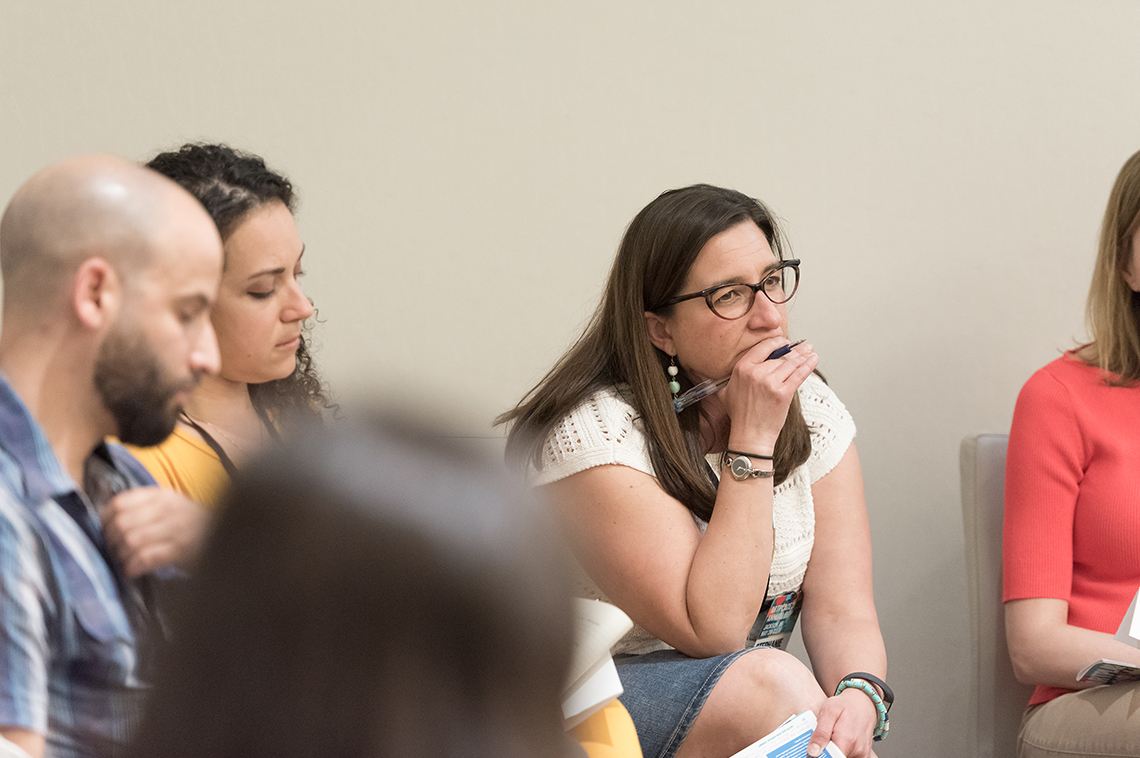


Today, we are releasing a discussion guide designed for creative placemaking initiative partners to surface and develop agreement on a shared understanding of the underlying values in their work.
Partners in Building a Strong Field: The Assessment
For the last two years, four major organizations have worked together to collaborate on their investment into the creation of a strong and sustainable national field of practice in which community residents intentionally use arts, culture, and design strategies in local partnerships for equitable, healthy, and sustainable outcomes.
Arizona State University’s Herberger Institute for Design and the Arts, ArtPlace America, The Kresge Foundation, and the National Endowment for the Arts meet regularly and share information about their grantmaking, research, and planning. Together, in 2018, they asked the Bridgespan group to help them assess the strength and needs of the field of creative placemaking using the Strong Field Framework.
We learned that articulating and clarifying the purpose and values of creative placemaking was a need for the field.
The report named six broad priorities shared by the field and it is our hope that this new discussion guide responds in a meaningful way to the two of these:
- Explicitness and transparency about the assumptions, values and hypotheses that people bring to the work, specifically about what it means to develop equitable, healthy and sustainable communities.
- Practical project-level resources that are relevant, useful and actually used.
Developing the Values Discussion Guide: Testing with the Field
This document was developed through a series of open workshops during the 2018 - 2019 Creative Placemaking Leadership Summits organized by the National Consortium for Creative Placemaking, as well as conversations with colleagues from the four national partners.
At each of the summits, the partners hosted a workshop in which we shared a draft of the document and participants reviewed and tested the discussion questions.
There were six summits, including the ArtPlace Summit in May:
College Park, MD - Oct 2018
Albuquerque, NM - Feb 2019
Columbia, SC - April 2019
Jackson, MS - May 2019
Los Angeles, CA - June 2019
Cincinnati, OH - Oct 2019
In all, about 250 people commented on the drafts and after each convening, we edited the draft to reflect new input.
Attendance was diverse, both in experience level and professional background. For example, one convening included people representing: an arts council from conservative rural county, a criminal justice organization, a performance venue, a presenting organization, an established community arts center, a public art consulting organization, a community housing/immigrant rights project, and a developer of a new arts center.
What We Heard
We heard feedback about specific word choices and the way people in specific communities might interpret those words. We also heard about the challenges of explaining to others what the work would be like and why artists would be involved.
Many people expressed appreciation for having a short, accessible document to use in getting a project started and making sure everyone is on the same page. Others specifically mentioned the importance of having a prepared document (authored by someone else) to assist with conversations about equity and power.
How to Use the Guide
We learned that local users of the guide will want to (and should) amend and adjust it for local context. We expect that users will discuss the questions that apply to their work, and ignore those that don’t. We hope that users will share their thoughts with us about new ways to address the values conversation in a local context.
And we know that this document will continue to evolve over time.
Download the discussion guide.
It’s Important Because…
It’s important to recognize that both arts/culture and community planning/development are fields that have been shaped by and continue to reinforce inequitable outcomes in many communities.
This is why we want to bring a set of values to creative placemaking practice that is both explicit and transparent. We know that some early efforts put more focus on economic outcomes and not enough on social and community-designed goals.
In this discussion guide, we acknowledge the obligation asserted by the field input to affirmatively reflect community assets and equitable goals in creative placemaking. We hope that local partners will discuss the questions in this guide together to ensure that their project process and outcomes are aligned to these values and that the partners are in agreement.
Comment and Connect
This process was implemented and supported by the creative placemaking partners: Arizona State University, the Kresge Foundation, and the National Endowment for the Arts.
Margy Waller, Field Coordinator for these national partners in Creative Placemaking, conducted the effort. Please send your questions and comments to margywaller [at] gmail.com.





